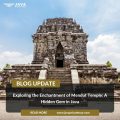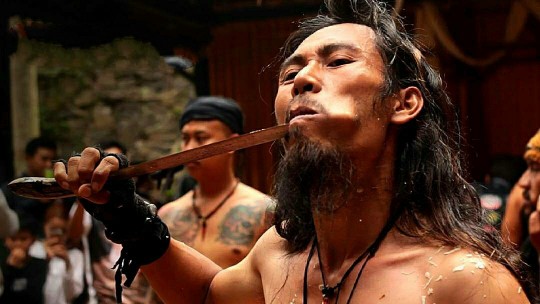javaprivatetour.com – Have you ever wondered what mysteries lie behind the lush green hills of Java, Indonesia? Well, let’s embark on a virtual adventure to explore the history of the highest temple complex in the region – Candi Ijo. But before we dive into the details, let’s talk a bit about the enchanting allure of Java and why it’s a must-visit for foreign tourists.
Java, with its diverse landscapes and rich cultural heritage, has become a hotspot for travelers seeking more than just a typical vacation. Whether you’re into leisurely holidays, adventurous traveling, business trips, research endeavors, journalistic pursuits, or creating captivating content for your YouTube channel, Java has it all.
Now, let’s shine a spotlight on one of Java’s historical gems, Candi Ijo.
Unveiling Candi Ijo: A Historical Journey
Our story begins in the era of the ancient Mataram Kingdom. Imagine stumbling upon a Hindu temple complex nestled on the slopes of a hill. Among the many temples in Yogyakarta, Candi Ijo stands tall, literally, being the highest among its counterparts.
Discovered in 1886 by H.E. Dorrepaal, a Dutch national searching for land for sugarcane plantations, Candi Ijo started to unveil its secrets after nine centuries of being buried. Further research by C.A. Rosemeir revealed three stone statues – Ganesha, Shiva, and a headless, four-armed figure carrying a chakra.
Fast forward to 1958, the Archaeological Department conducted in-depth research, and the main temple restoration by the Cultural Heritage Preservation Office of Yogyakarta was completed in 1997.
Candi Ijo, situated in the village of Sambirejo, Prambanan district, Sleman Regency, is not far from the renowned Candi Ratu Boko and Candi Prambanan. This temple is a testament to the classical worship structures of ancient Java, believed to be built between 850 to 900 AD during the reign of King Rakai Pikatan and King Rakai Kayuwangi.
Perched at an elevation of approximately 425 meters above sea level on 0.8 hectares of land, Candi Ijo offers breathtaking views of the surrounding natural beauty.

The Name’s Origin and Cultural Significance
Why the name Candi Ijo? The temple is situated in the lush, green hills, aptly named “Gumuk Ijo” in Javanese, as mentioned in the Poh Inscription from 906 AD found in the village of Randusari, Klaten.
This historical site, once under the rule of Sri Maharaja Rakai Watukura Dyah Balitung, spans across Central Java, East Java, and even Bali. Candi Ijo, with its 17 structures on 11 terraces, is a Hindu cultural heritage site, showcasing the unique architectural style of ancient Nusantara.
The temple’s main complex, located on the highest terrace, follows the typical stepped pyramidal structure found in many ancient sites across the Indonesian archipelago. This punden berundak, a distinctive feature of Nusantara’s Megalithic-Neolithic culture, represents a form of reverence for ancestors.
Could it be as ancient as the Gunung Padang Site? Subsequent restoration efforts in 1997 revealed a temple unlike any other, seemingly constructed with ancient skills reminiscent of the Gunung Padang Site. The discovery challenges the notion that our temples only emerged after the 5th century AD.
Journey into the Heart of Candi Ijo
As you ascend to the highest terrace, you’ll encounter three smaller temples known as perwara temples, believed to honor the Hindu trinity of Brahma, Vishnu, and Shiva. These smaller temples feature intricately decorated structures, including carvings of the Nandini bull, the mount of Lord Shiva.
The main temple, with its square layout, boasts an entrance on the west side and three niches resembling windows on each side. The northern, eastern, and southern walls, adorned with Kala-makara designs, once housed statues of Hindu deities.
Above the entrance, the iconic Kala-Makara motifs, symbolizing the cosmic forces of the sun and earth, add to the uniqueness of Candi Ijo. Inside the main temple, you’ll find a spacious chamber with a lingga and yoni at its center, representing the sacred union of Lord Shiva and his consort, Goddess Parvati.
Preserving the Legacy
Constructed using andesite stones, similar to Candi Prambanan, Candi Ijo’s structural preservation efforts are ongoing. The ongoing restoration aims to safeguard this historical marvel for future generations, providing visitors with a glimpse into the rich cultural tapestry of ancient Java.
In conclusion, whether you’re a history enthusiast, nature lover, or cultural explorer, Candi Ijo is a must-visit destination in Java. Its towering presence amidst the lush landscape and the secrets it holds within its ancient walls make it a captivating journey through time.
Now, imagine experiencing this historical adventure with Java Private Tour. Not only will you have a knowledgeable guide fluent in English, but you’ll also enjoy the flexibility to tailor your itinerary to your preferences. With certified local guides, a fleet of private vehicles ranging from sedans to tourist buses, and a team recommended by foreign embassies, Java Private Tour ensures a seamless and memorable exploration of Java’s hidden treasures.
So, for all you first-time travelers to Java, let Java Private Tour be your compass, your benchmark, and your trusted recommendation for an unforgettable journey through the heart of Indonesia’s historical wonders.
Ready to uncover the mysteries of Candi Ijo? Plan your Java Private Tour adventure today, you can simply BOOK HERE.
Discover the past, experience the present, and create timeless memories with Java Private Tour!
You May Also Like
 Exploring the Cultural Treasure Trove, Museum Keraton Yogyakarta
Exploring the Cultural Treasure Trove, Museum Keraton Yogyakarta
 Exploring the Enchantment of Mendut Temple: A Hidden Gem in Java
Exploring the Enchantment of Mendut Temple: A Hidden Gem in Java
 Exploring the Charms of Pentingsari Village – A Hidden Gem in Yogyakarta
Exploring the Charms of Pentingsari Village – A Hidden Gem in Yogyakarta
 Explore the Award-Winning Nglanggeran Village : A Hidden Gem in Yogyakarta!
Explore the Award-Winning Nglanggeran Village : A Hidden Gem in Yogyakarta!
 Exploring the Hidden Gems Around Borobudur Temple with Java Private Tour
Exploring the Hidden Gems Around Borobudur Temple with Java Private Tour












